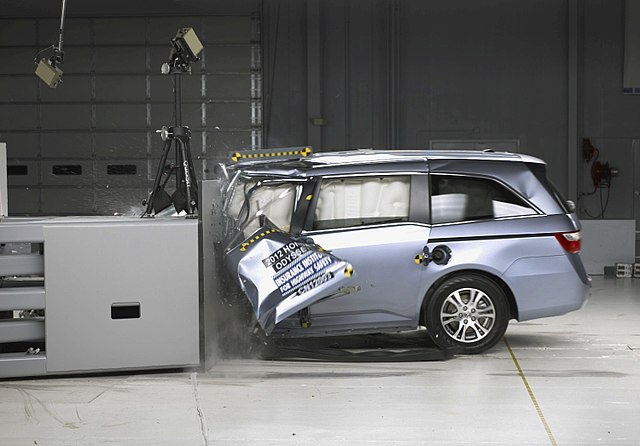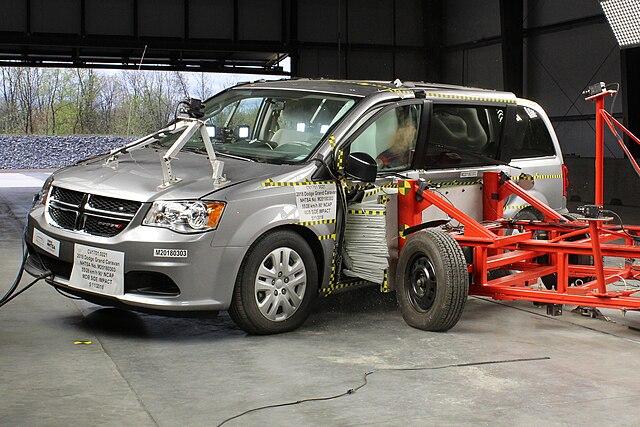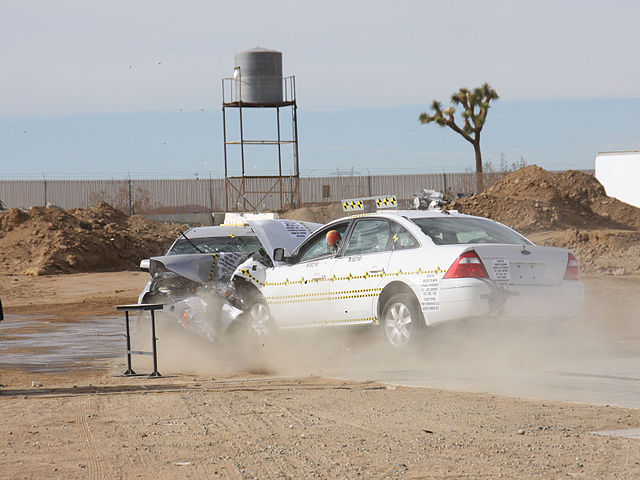A crash simulation is a virtual recreation of a destructive crash test of a car or a highway guard rail system using a computer simulation in order to examine the level of safety of the car and its occupants. Crash simulations are used by automakers during computer-aided engineering (CAE) analysis for crashworthiness in the computer-aided design (CAD) process of modelling new cars. During a crash simulation, the kinetic energy, or energy of motion, that a vehicle has before the impact is transformed into deformation energy, mostly by plastic deformation (plasticity) of the car body material, at the end of the impact.
The first successful frontal full car crash simulation: a Volkswagen Polo collided with a rigid concrete barrier at 50 km/h (ESI 1986).
A subdivision of the metal exterior of the car, called a finite element, is connected to nodes at each vertex.
A crash test is a form of destructive testing usually performed in order to ensure safe design standards in crashworthiness and crash compatibility for various modes of transportation or related systems and components.
Frontal small-overlap crash test of a 2012 Honda Odyssey
2018 Dodge Grand Caravan being struck by a mobile deformable barrier at 62 km/h
2016 Honda Fit striking a wall head-on at 56 km/h
NHTSA research crash test involving two Ford Five Hundreds






